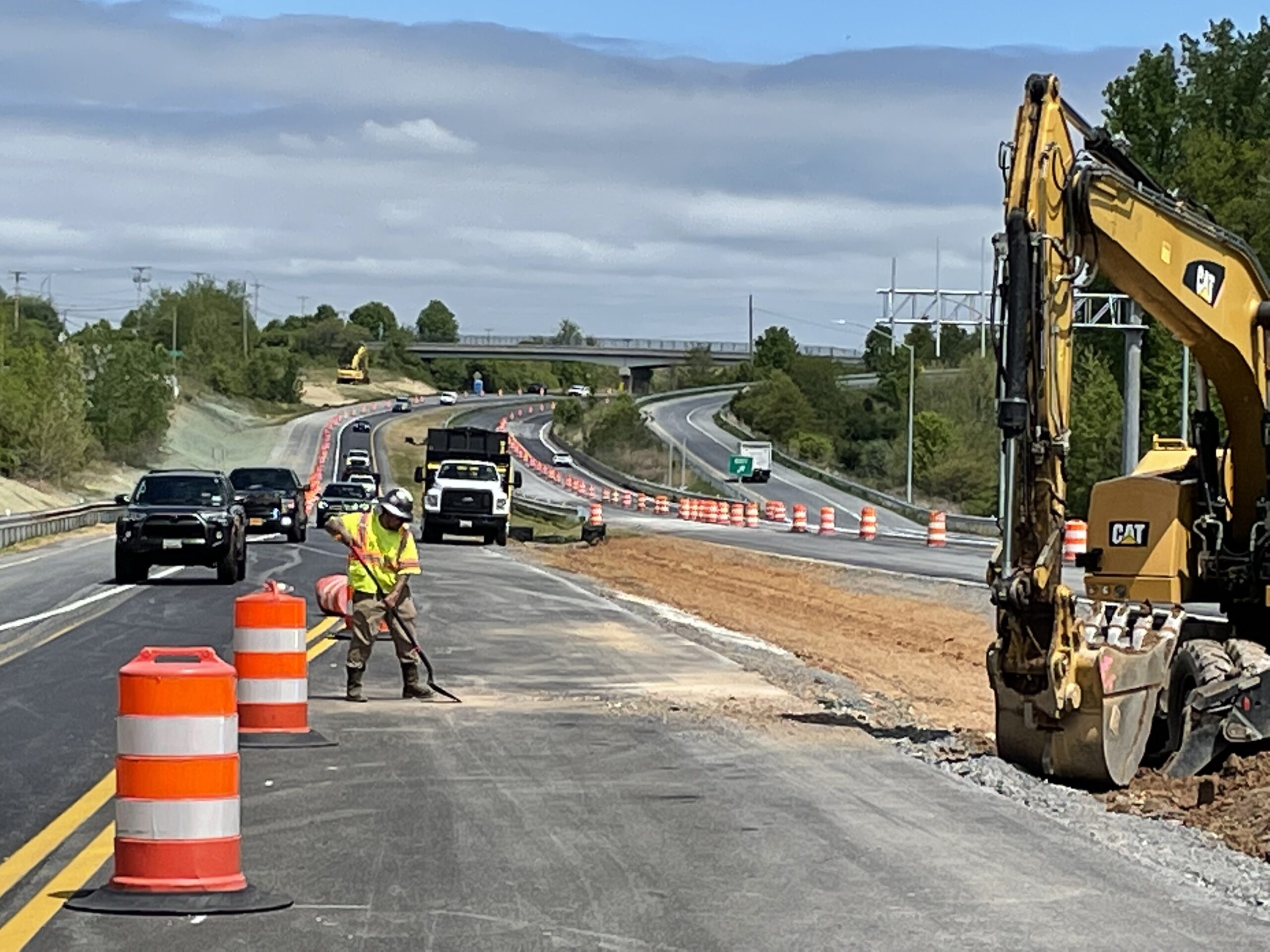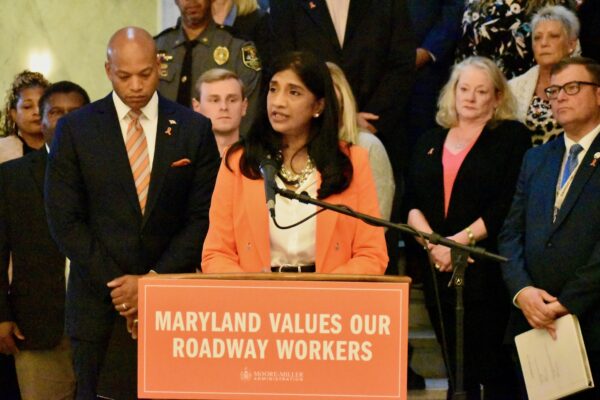
A fine increase proposed for citations issued by speed cameras in highway work zones could bring tens of millions of dollars more in collections by the state.
The proposed increases are part of an effort to drive down the number of accidents in highway work zones.

Lt. Gov. Aruna Miller (D) announces more than a dozen recommendations issued by the Work Zone Safety Work Group. Miller, a transportation engineer, chaired the panel. Photo by Bryan P. Sears.
“The purpose is to change driver behavior, not to collect revenue from drivers,” said Lt. Gov. Aruna Miller (D), who testified Thursday in favor of the bill before the Senate Judicial Proceedings Committee.
Senate Bill 479, a Moore administration bill, proposes an expansion of speed cameras in work zones across the state. The bill also would allow the state to move to unmanned systems and allow multiple cameras to be placed throughout a single work zone.
“We really want to enforce safe work zones,” Miller said.
Miller asked the committee to accept an amendment that would allow county and municipal governments to place the cameras in local road work zones. Current law already allows such placement, but many counties do not participate because fines go to the state. The proposed amendment would allow the counties to keep the fines.
The expanded enforcement was part of a set of recommendations of the Work Zone Safety Work Group. Gov. Wes Moore (D) created the panel last year following the death of six workers at a work zone on the west side of the Baltimore Beltway.
Maryland’s Occupational Safety and Health Office cited the State Highway Administration with a “serious violation” related to the fatal crash.
The report noted that a failure to place signs near the work zone exposed workers to being struck by passing vehicles.
Moore tapped Miller, a traffic engineer by profession, to chair the panel.
At any given time, there are about 300 highway work zones in the state. Last year, there were more than 1,200 crashes in those work zones, according to Miller.
“So, for people who work on these sites, it’s not a matter of if they will see a crash on the job site, it’s a matter of when,” she said.
The work group released more than a dozen recommendations including increasing fines for citations issued by work zone speed cameras to $290 for a first and second offense in a calendar year. Penalties for a third or subsequent offense in a calendar year jump to $1,000 per instance.
Currently, the state issues $40 tickets with no points to motorists who exceed the posted speed limit by 12 miles per hour or more.
In fiscal 2023, the state collected $9.7 million off 335,888 speed camera citations in work zones, according to a legislative analysis.
Transportation officials project that the number of citations will increase even if they do not expand the number of speed cameras and higher fines are not implemented before Jan. 1, 2025.
Additionally, the department estimates that it would collect, on average, about $208.88 cents per citation issued — more than $70 million based on the number of citations issued in fiscal 2023.
Analysts estimated that revenues from citations starting Jan. 1 would increase by $32.3 million. Of that, nearly $26 million would go to the State Highway Administration for work zone safety. More than $6 million would go to the Maryland State Police for cars and other equipment.
Under the amendment Miller proposed, local and municipal governments that expand the use of cameras in work zones on local roads would have to put that money into safety programs.
Maryland adopted the use of manned speed cameras in highway work zones in 2009.
Former Democratic Sen. John Giannetti, who testified in opposition to the bill, said the fine established 15 years ago was a compromise meant to ensure that the state was not using the cameras to pad its budget.
“We had to come up with a way to be sure that the government never appears to have a conflict of interest between the interest of safety and the interest of raising money,” said Giannetti, who served on the Senate Judicial Proceedings Committee, which worked on an earlier version of the bill that was passed by the legislature by vetoed by then-Gov. Bob Ehrlich (R).
Giannetti said there is “a real risk that that might not remain that way.”
Miller and Maryland Motor Vehicle Administration Administrator Christine Nizer said the sole focus of the changes is to change driver behavior.
“These are all choices: A driver makes a choice to get behind the wheel impaired or to drive excessively at high rates of speed,” Nizer said. “Unfortunately, other people often suffer the consequences of those very poor decisions.”




 Creative Commons Attribution
Creative Commons Attribution